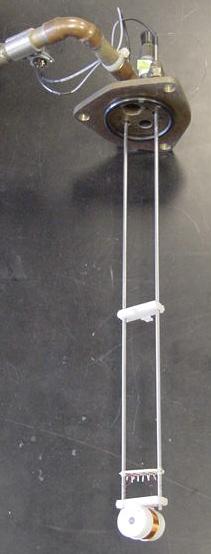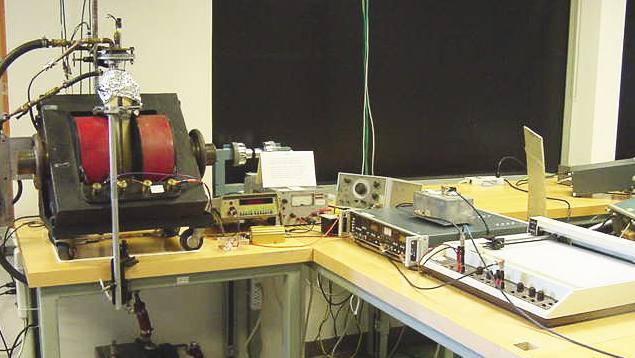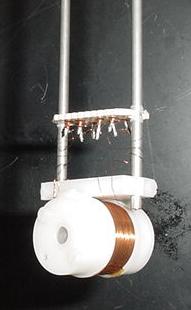Low Temperature Superconductivity



A sample of mercury is cooled to liquid helium temperatures and the critical field as a function of temperature is recorded between 1.6 and 4.2K. Using a lock-in detection scheme, students record the transition of the Hg sample from normal to superconducting as they vary the vapor pressure and thus the temperature of the liquid helium bath surrounding the sample. Students are introduced to the concept of a 2nd order phase transition, where a system goes from a less ordered state to a more ordered state. Indeed, students even have the opportunity to see a visible manifestation of such a transition, as they can see the very different behavior of the liquid helium bath above and below the lambda point at ~ 2.2K. With both liquid nitrogen and liquid helium used in this experiment, and with several different vacuum systems in operation, students have a rich opportunity to learn about the use and handling of cryogenic fluids and the operation of vacuum pumps and associated vacuum hardware.
Experiment Information
- Write-up
- Soulen, R. J., J. F. Schooley, and G. A. Evans Jr., "Simple instrumentation for the inductive detection of superconductivity", Rev. Sci. Instrum., 44(10), 1537-1538 (1973). (restricted access)
Discussion Questions
- If the pressure-transducer amplifier offset were not properly set (say, the voltmeter read 0.1 volts at zero pressure), what would happen to the data set? How would this affect your final results for the critical temperature at zero field and the critical field at zero temperature?
- If the pressure transducer amplifier gain were not properly zeroed (say, the voltmeter read 7.800 volts 760 torr), what would happen to the data set? How would this affect your final results for the critical temperature at zero field and the critical field at zero temperature?
- Here are some questions concerning the magnet-coil current-drive circuit:
- What does the "protection diode" do?
- What does the "clamping diode" do?
- How much voltage would be measured by the x input on the x-y recorder when the magnet current is 0.3 amps?
- What would happen if the DC supply were set at 40 volts instead of 20 volts?
- Why does the signal on the y-axis of the x-y recorder jump suddenly when the normal/superconducting transition is passed? Why does the signal settle to a new level after the transition?
- What would you expect to see if you tried to do this experiment with indium instead of mercury, that is what aspects would be different? Do you think that the values of the critical temperature and critical field would be as well established for indium by this setup? Why or why not?